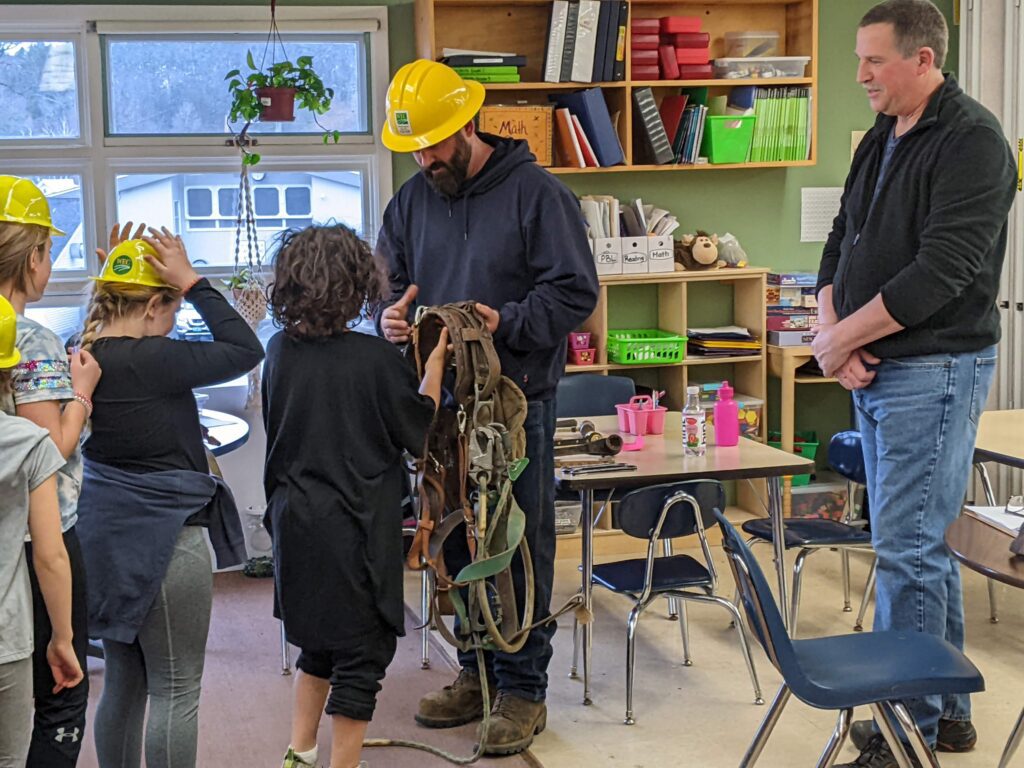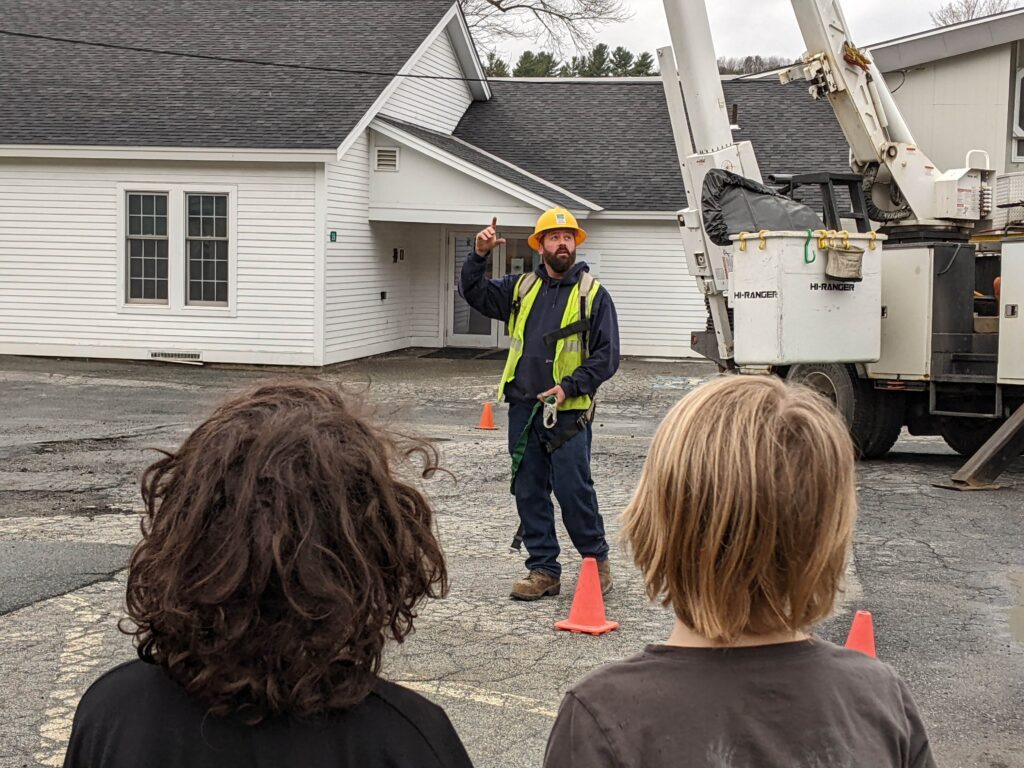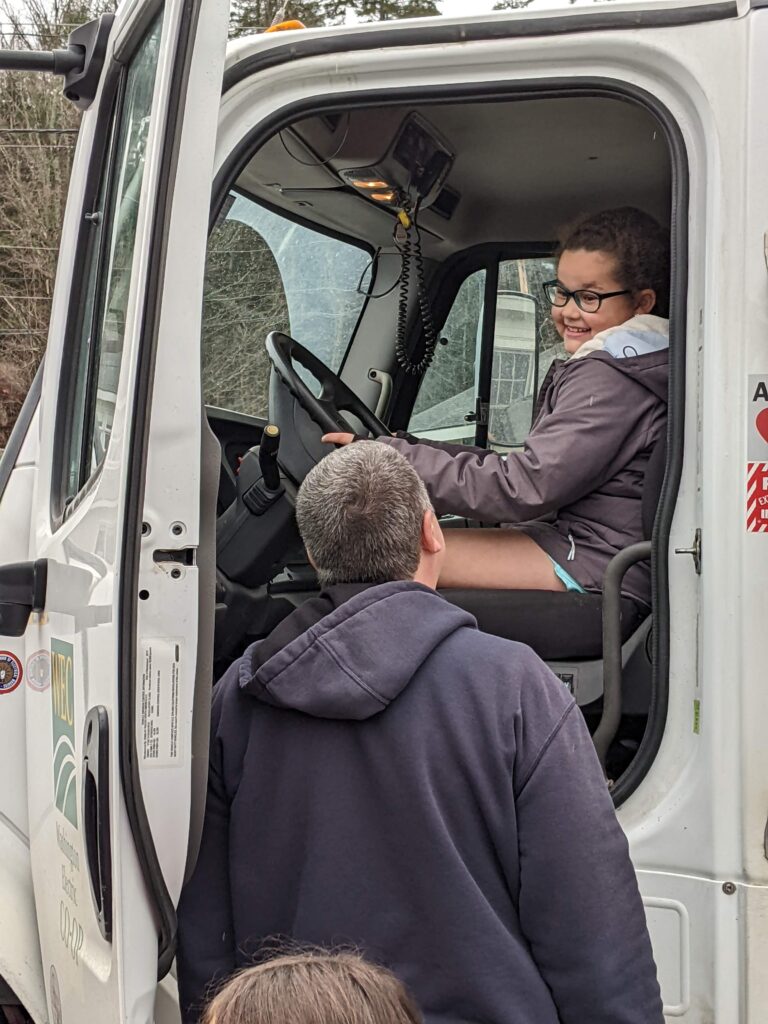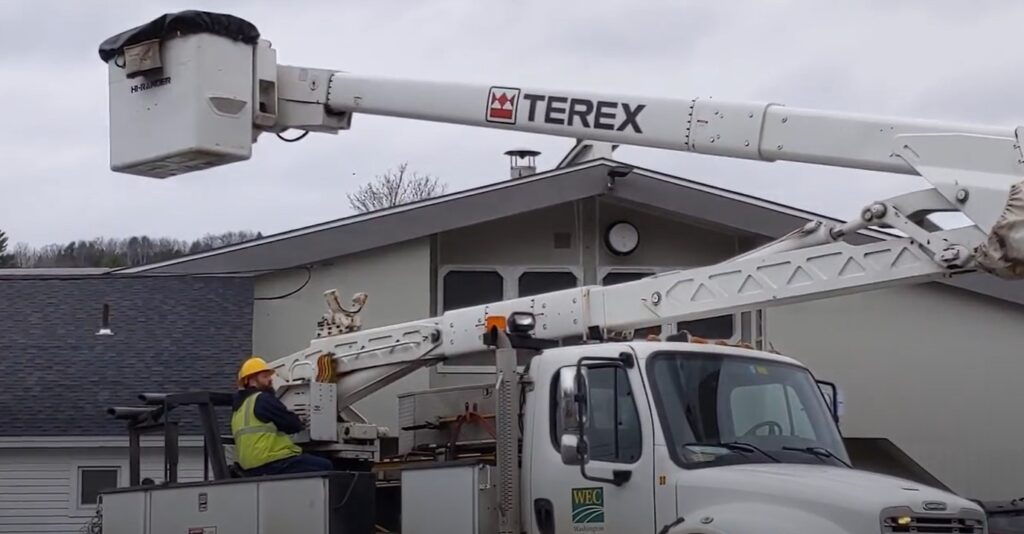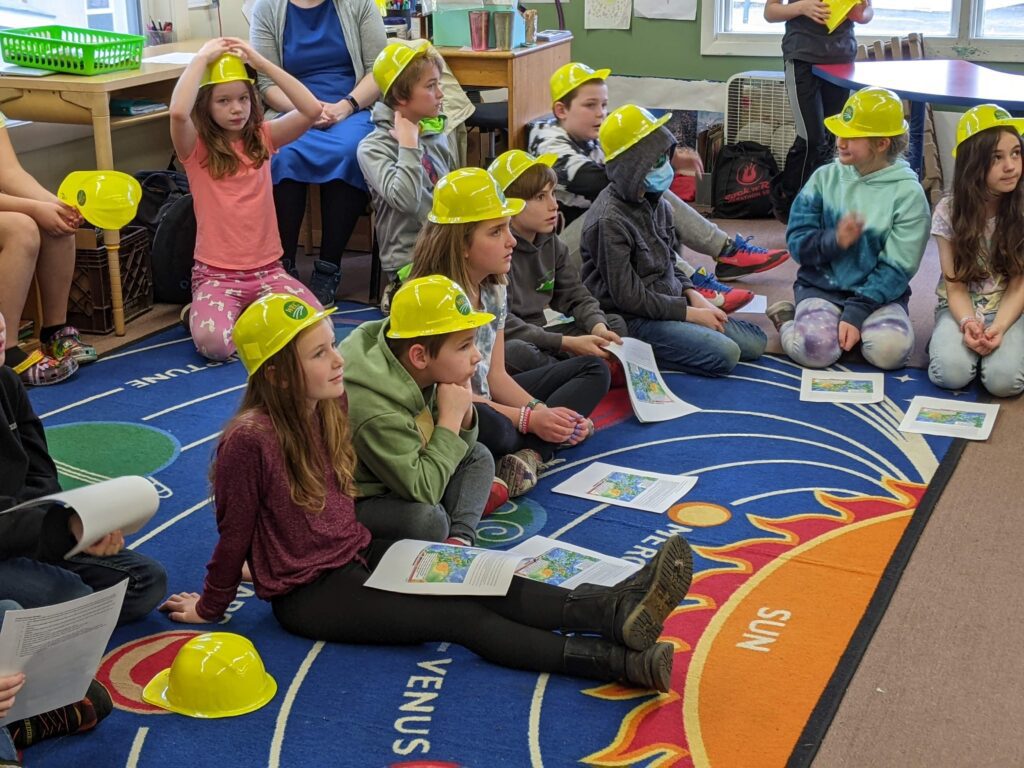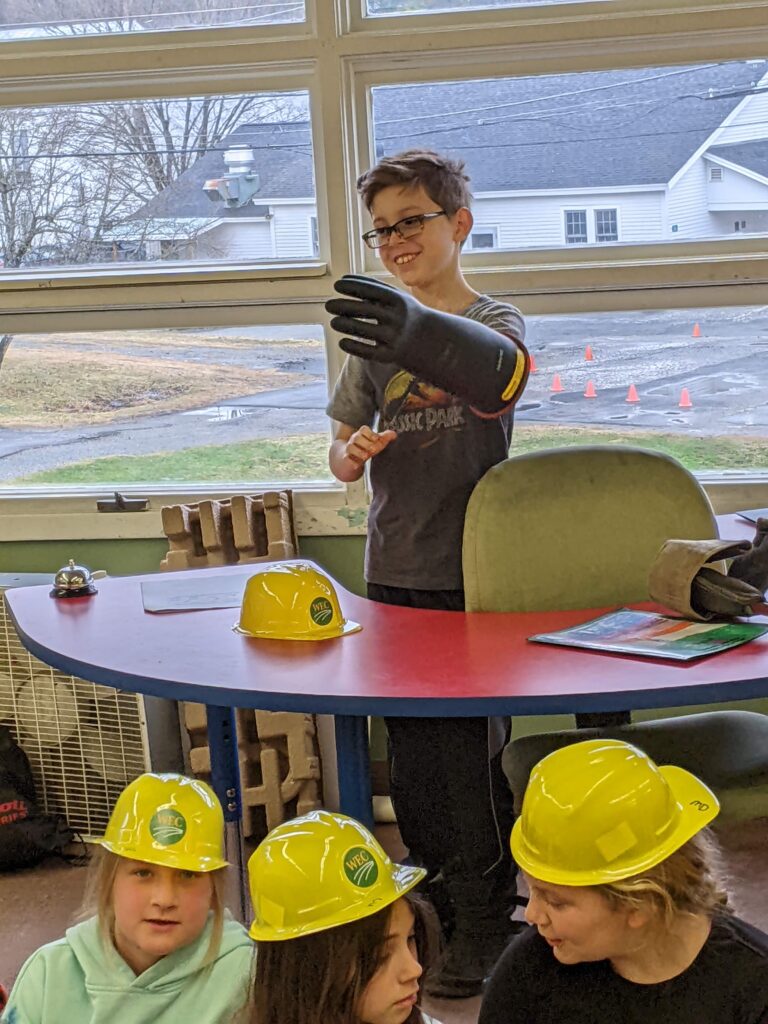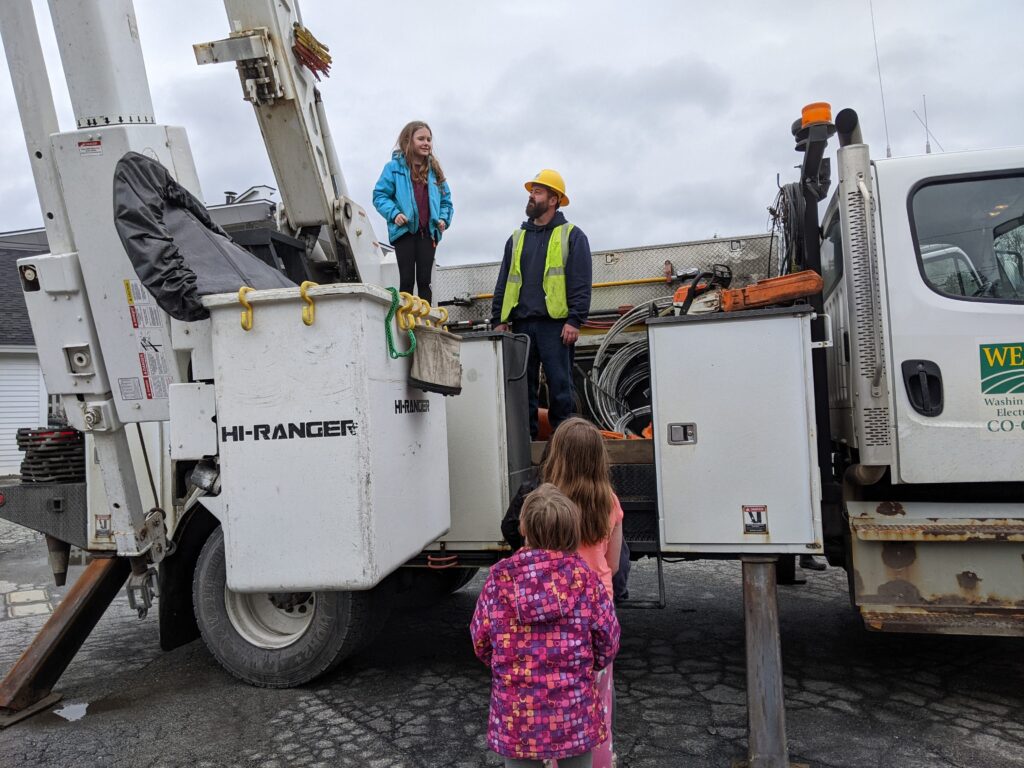
How do you capture the attention of a nine-year-old? You need a topic with action, danger, and the potential for knowledgeable kids to save the day. At the Cabot School, grade 3-4 co-teachers Alison Morrow and Rebecca Nally have landed on a class exploration topic that has, unfortunately, real-world application: natural disasters.
The class studies disasters for months. “We integrate everything into it,” said Nally, including language arts and math. The project culminates in a community-wide public presentation by the students.
Their study is not limited to the conditions that create wildfires and floods: the students are also learning how people repair the damage caused by disasters, and what steps to take to prepare for and survive calamity, and ride out the aftermath. Each student understood they had a role to play in preparation, and created lists of steps to take and items to store in a kit.
Nally invited Director of Engineering & Operations Dave Kresock and Utility Field Technician Doug desGroseilliers to speak to the class about how an electric utility prepares for and responds to outages. And to sweeten the demo, Kresock and desGroseilliers brought a bucket truck. Kids took turns climbing into the lowered bucket and sitting behind the wheel.
First, Kresock explained how the grid works. After power is generated, he explained, it’s carried long distances over transmission lines to a distribution utility’s substation. From there, it’s sent out over relatively shorter distances. The distribution is like a tree, he explained, with the roots at the substation, the trunk as the three-phase lines, and the branches as the single-phase lines that fork off and carry power down smaller roads to homes.
WEC plans ahead for outages by following weather reports that meteorologist and Co-op member Roger Hill prepares for Vermont utilities, and posts alerts on wec.coop. “So, a lot of you had ‘check alerts’ on your prep lists,” Nally told the class. “That’s one way you could check.”
The length of time to restore an outage depends – it could take from half an hour to many days, said Kresock and desGroseillers. If the outage is severe enough, Kresock told the class, utilities can request help from other utilities by way of a nationwide network called “mutual aid”. Then the home utility’s crews work with visiting crews to restore power. “In a natural disaster, it takes many days to get the power back on,” desGroseilliers told the class.
Kids’ answers to utility questions
WEC visitors asked Cabot third and fourth graders questions about electricity. These are some of their answers.
What is electricity?
“The power source for electronics.”
How do you know when there’s a power outage?
“The internet doesn’t work.”
Why are electric wires up on poles?
“When they’re in the air, you can’t get to them that easily.”
What can generate electricity?
Answers: Solar, wind, water
What do you think causes outages?
Answers: Thunderstorms, earthquakes, blizzards, hurricanes, floods, tornadoes, falling trees, wildfires, accidents.
How can you and your family prepare for outages?
Some of a cacophony of answers: Flashlight, batteries, portable radio, water, nonperishable food
If there’s a tree down on a power line and someone wants to cut down the tree, what do you tell them?
“Don’t do it!”
To report an outage, call 802-223-5245 or 1-800-932-5245. Visit wec.coop for outage information and for more tips on outage preparation.
Lineworker gear
Like firefighters, lineworkers are always ready, said Doug desGroseilliers. The truck is always full of gas and equipment, and lineworkers have their gear ready to go. He showed the class each item a lineworker brings out in the field.
- Pants: “These protect my legs from chainsaws or other accidents.”
- Hard hat: “This keeps my head safe from falling tree branches. It also protects me when I’m climbing up the pole and bump into something I’m not supposed to.”
- Winter gloves
- Summer gloves
- Rubber insulated gloves
- Climbing belt: “A bucket truck is one way of lifting up the pole, but sometimes you can’t bring the truck out.” One student asked if it was heavy–it is–and the class took turns trying to lift it.
- Climbers (metal boot gaiters with spurs)
- Protective goggles
- Flame resistant clothes
- Good sturdy waterproof boots
- Reflective rainsuits: for safety in low visibility conditions. “So when people see you, they know that their power will be back,” said a student.

